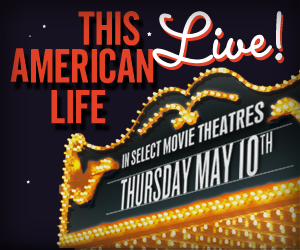You’ve probably heard the saying, “Don’t mess with Mother Nature.” But all around us, scientists, corporations, and even farmers are doing just that: breeding corn to resist pests and herbicides, inserting genes into salmon and spawning generations of lab specimens.
An arty crowd gathered in a suite of dark rooms got the first peek at a curiosity shop of exhibits. The black paint was barely dry on the cases, lit to reveal live sea monkeys swimming around a beaker and a stuffed white lab rat making a last stand on its hind legs — and then there were the domestic cat testicles.
What the specimens at the opening of the Center for PostNatural History had in common is that they were all tinkered with somewhere along in their histories by humans.
“But it does — some things pop out,” said Lauren Martin, wearing 3D glasses over her regular ones. She was looking at a canvas of what seems to the naked eye like a jumble of colorful electrical wires melted onto it. “There’s depth … some of the pheasant is popping out at me. It’s kind of weird. I’m still not exactly sure what I’m looking at.”
It was a photograph of a pheasant embryo, as small as your thumb nail, blown up to human size. Later, when the museum grew quieter, museum director Richard Pell explained that some visitors can’t pick out the tiny feathers or much of anything until the glasses go on.
“But once you do, and you can see its beak and where its eyes and its legs kind of curl up around its head — it's in kind of a classical embryonic position — people are just able to engage with something that’s so small it’s barely noticeable,” said Pell.
That’s the whole point: getting visitors to take a closer look at these tiny embryos raised in labs, or the larger rows of genetically modified corn growing inside the center, and documenting their existence.
Pell, an engineer and artist at Carnegie Mellon University, said the idea for the project came out of a meeting with an old classmate who’d made a leap into the field of synthetic biology — as in, engineering organisms. He was intrigued.
“It seemed to me there was this kind of missing piece between what’s happening in the lab and what everybody else is aware of,” Pell said.
Pell got private funding and donations of specimens from around the world. The collection's been traveling for a couple of years, but now finds a permanent home among art galleries and restaurants in the Penn Avenue Arts Corridor in Friendship.
Pell said he hopes the center will shine a light on the more shadowy side of nature, nut he’s not taking sides.
“The kinds of frameworks that are in play, which are right now the kinds of all or nothing scenarios — ‘Frankenfood’ versus ‘You’re getting in the way of curing cancer’ — neither is accurate,” Pell said. “Things need to be dealt with in a more nuanced, case by case basis, and the only way to get there is if we all slow down and start talking to one another.”
He thinks the Pittsburgh area is primed for that kind of dialogue. After all, it’s where large scale polio vaccinations of kids first took place in the 20th century, and is increasingly a home for the biochemical industry in the 21st.
Beginning May 15th, the Center for PostNatural History, located in the Penn Avenue Arts Corridor in Pittsburgh, hosts an exhibition about the Svalbard Global Seed Vault in Norway. More information is available from the Allegheny Front.





